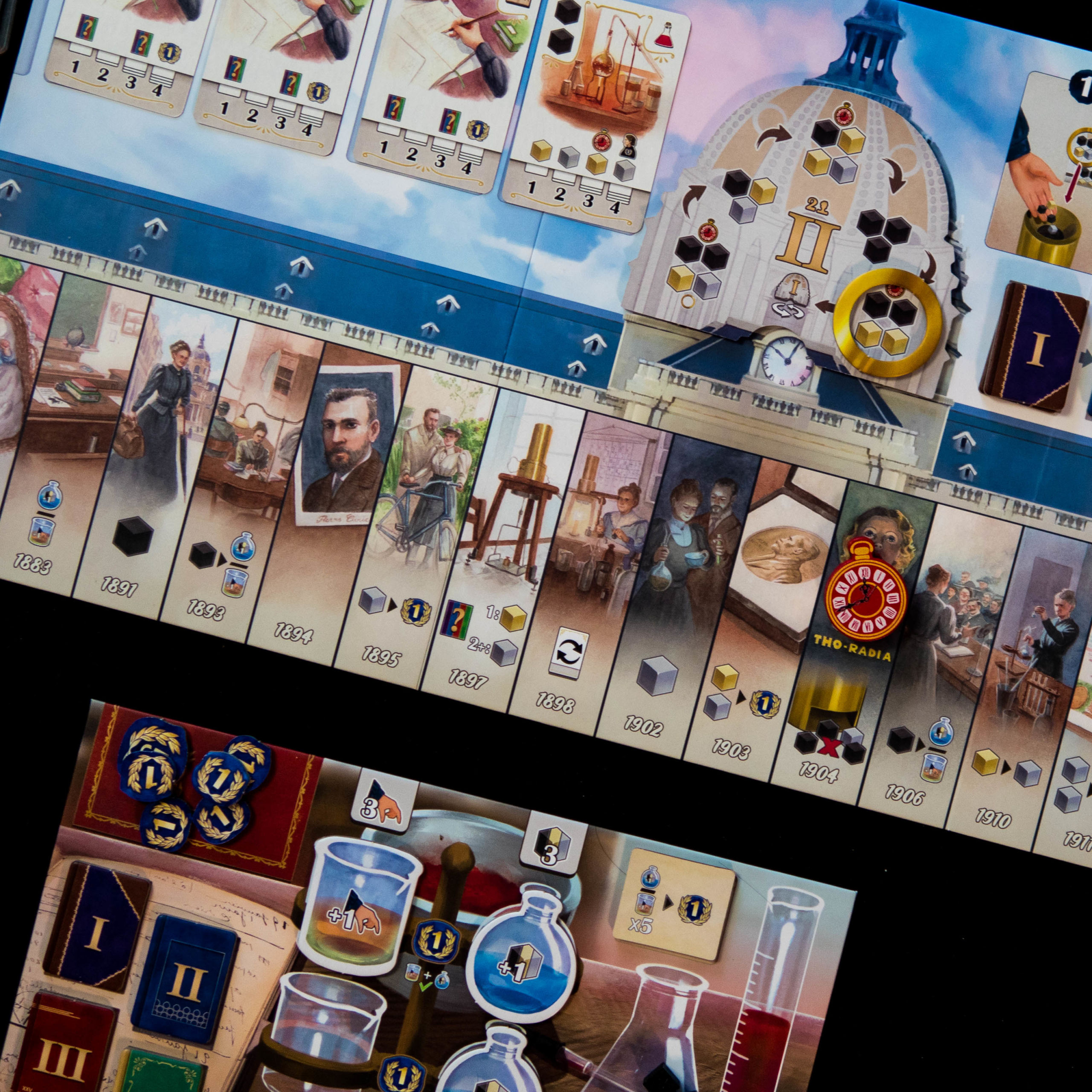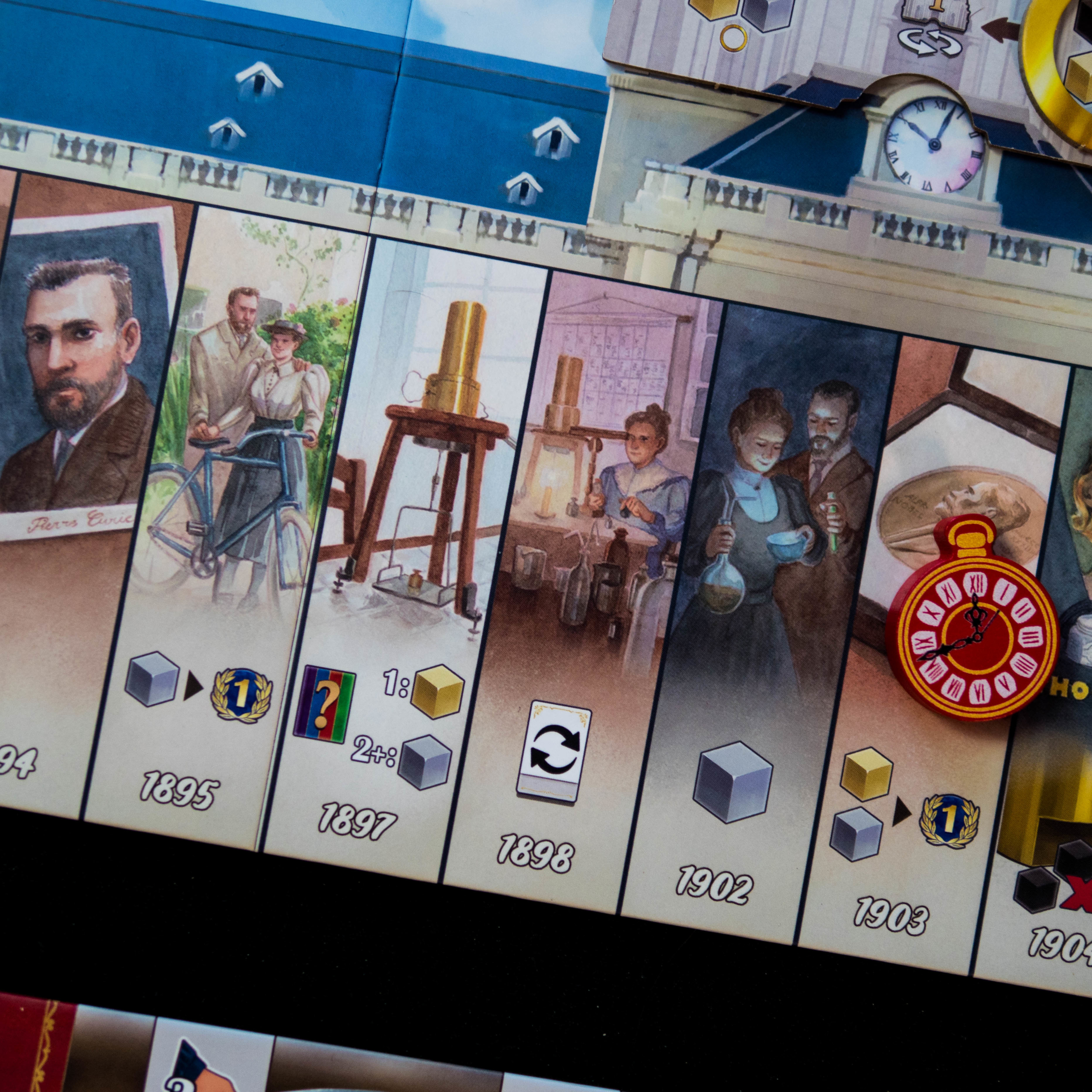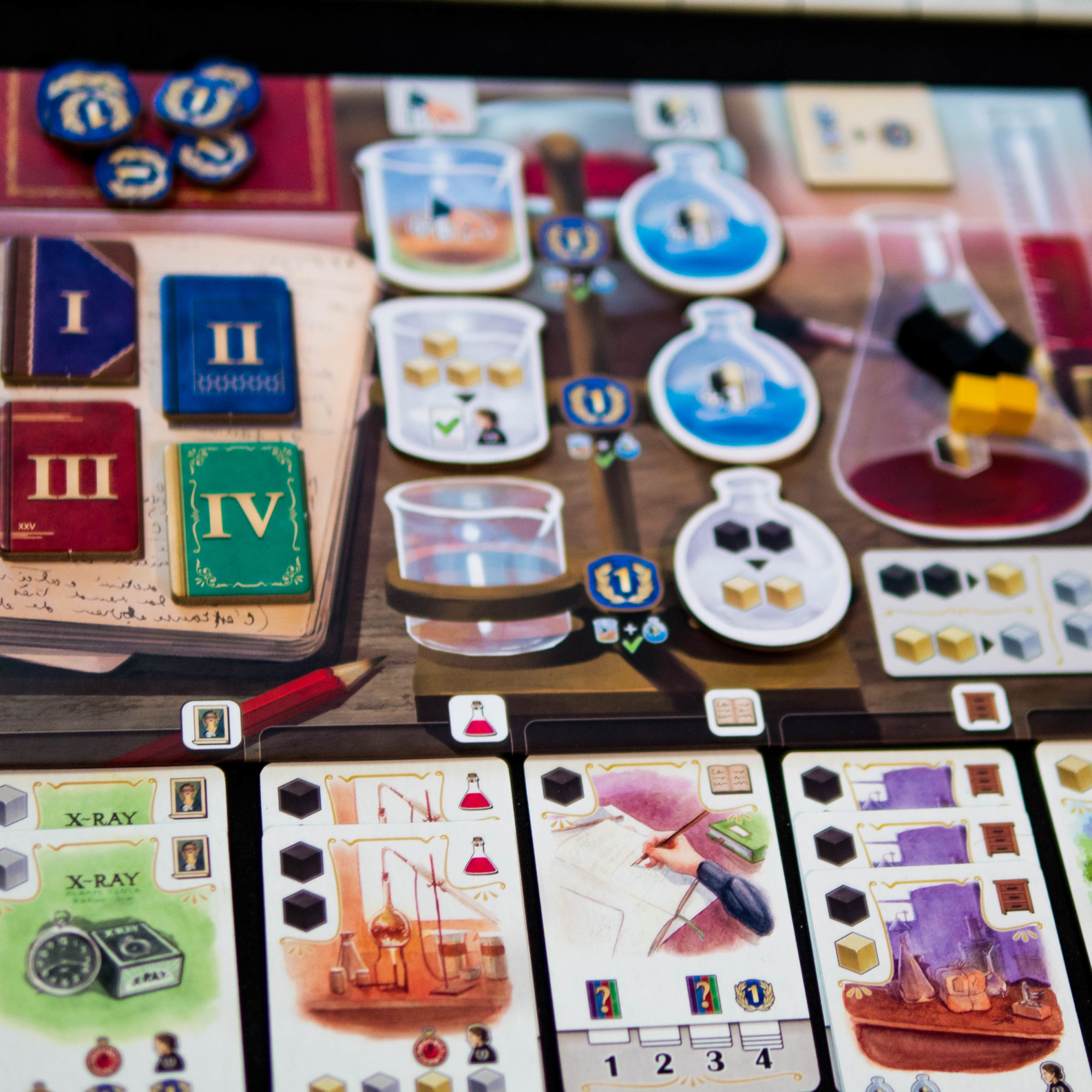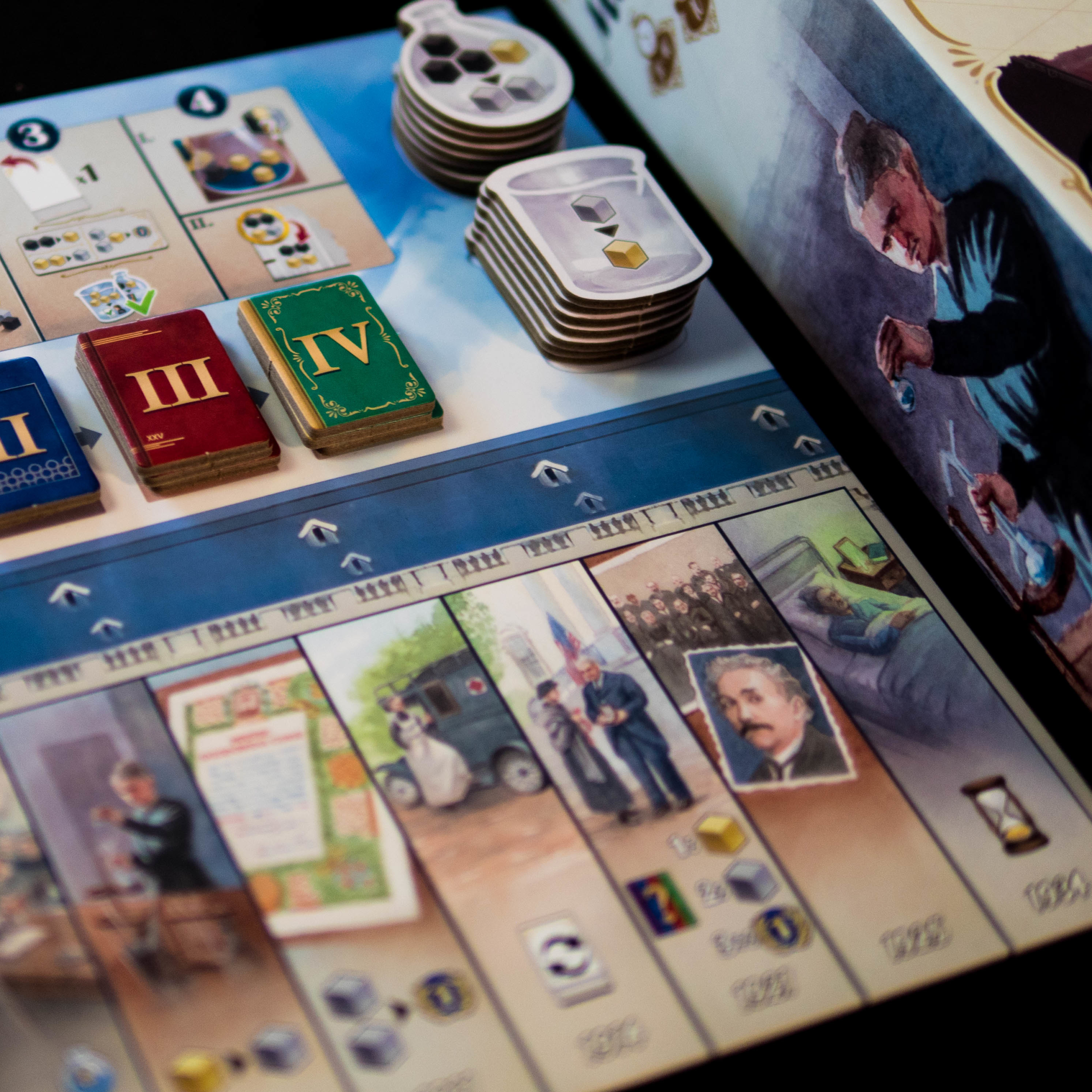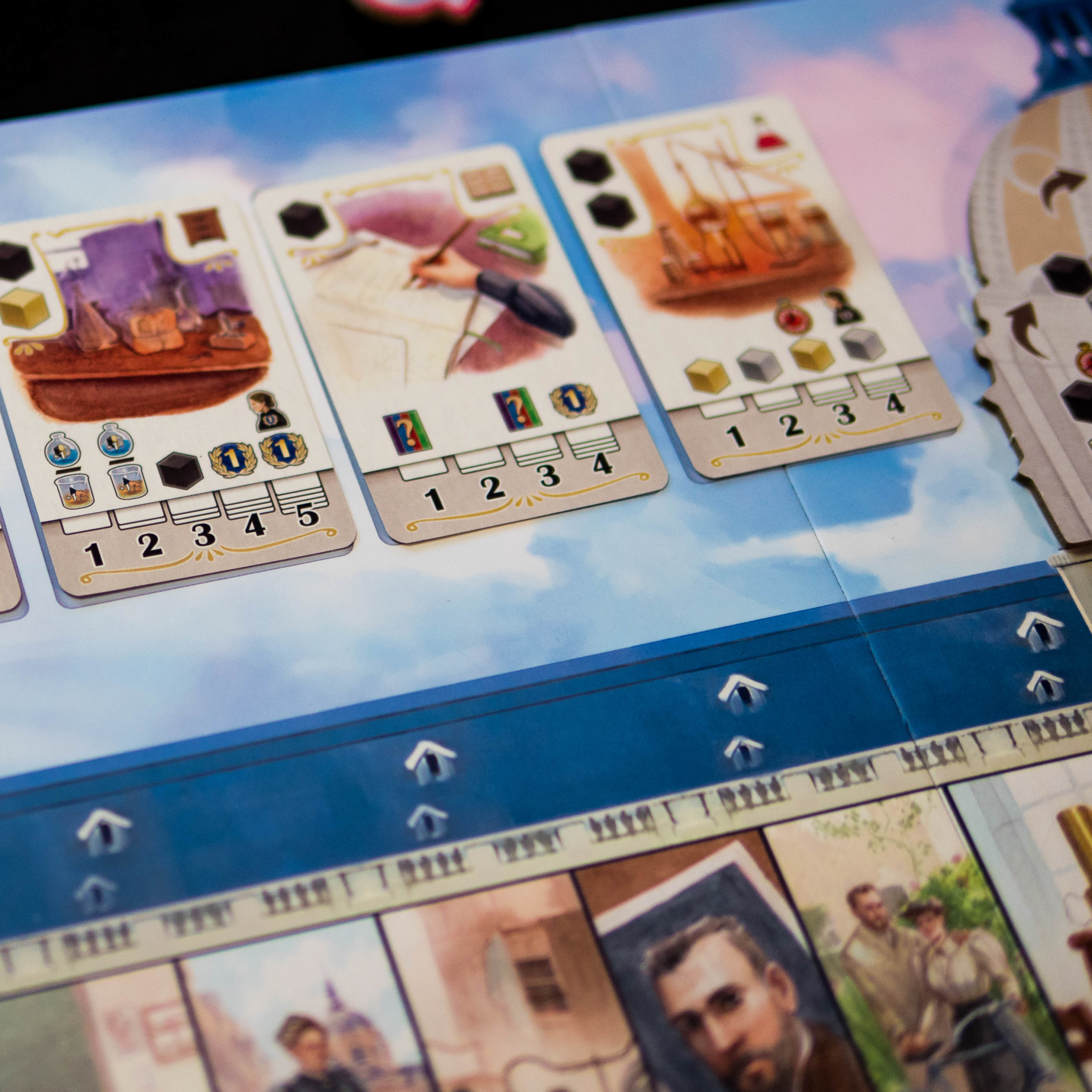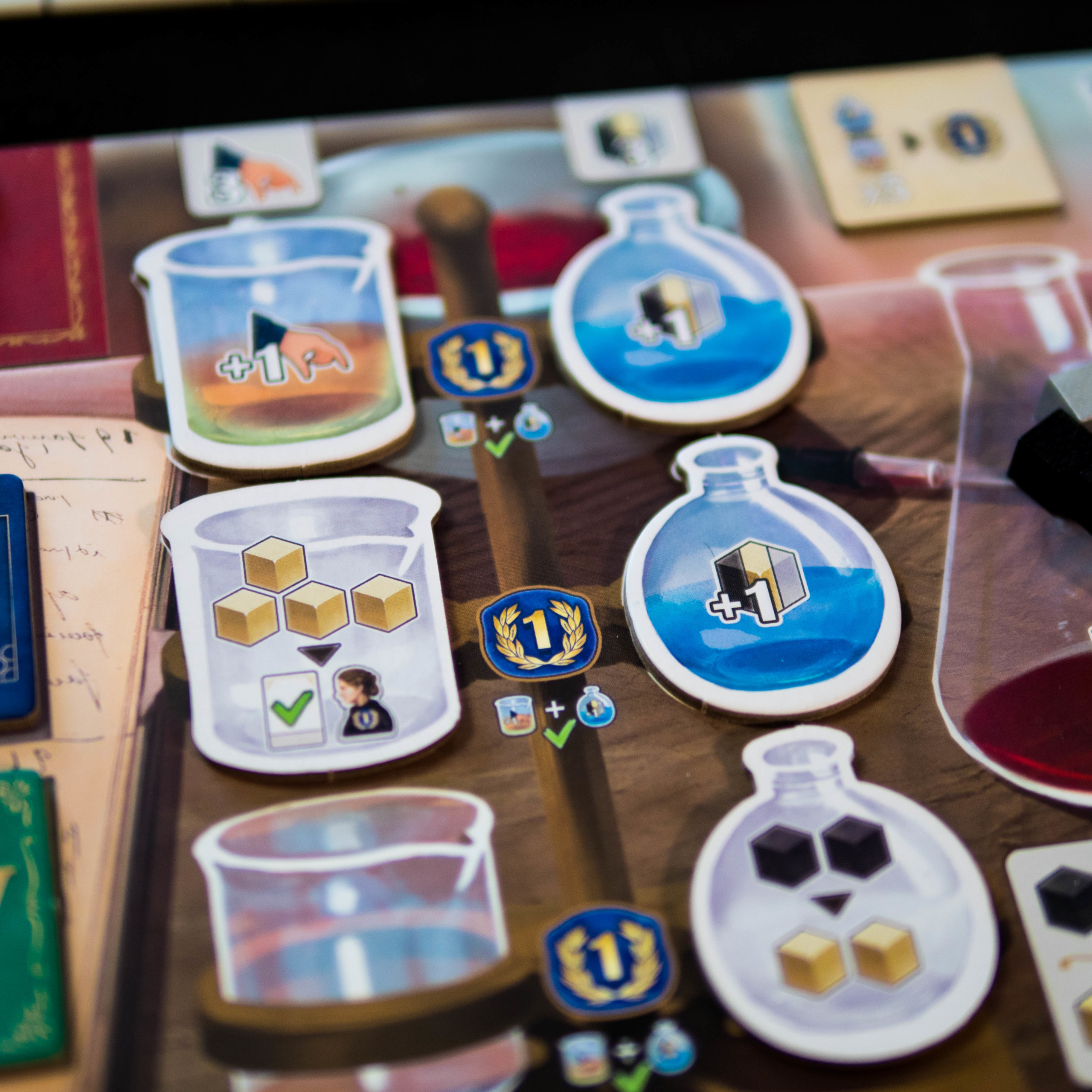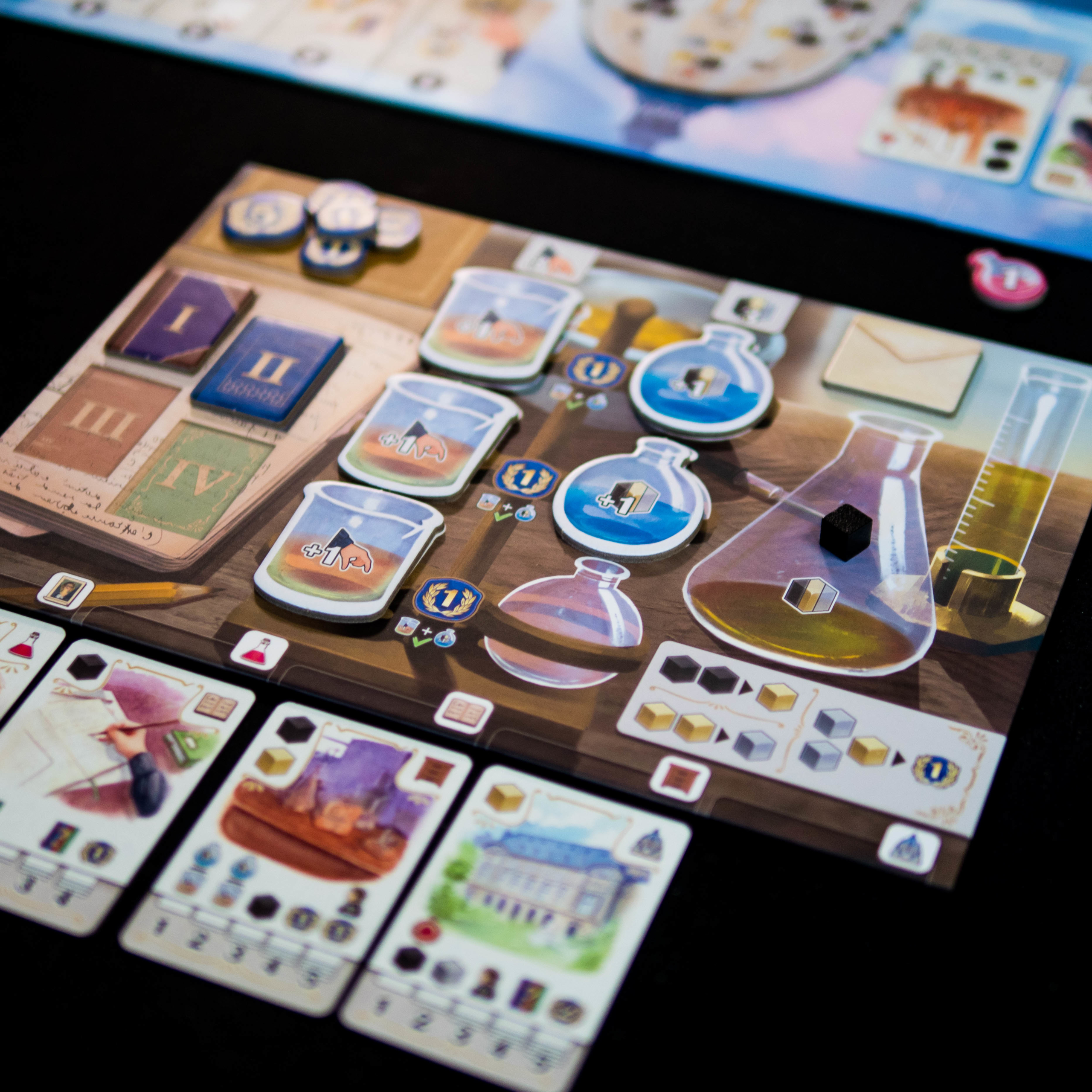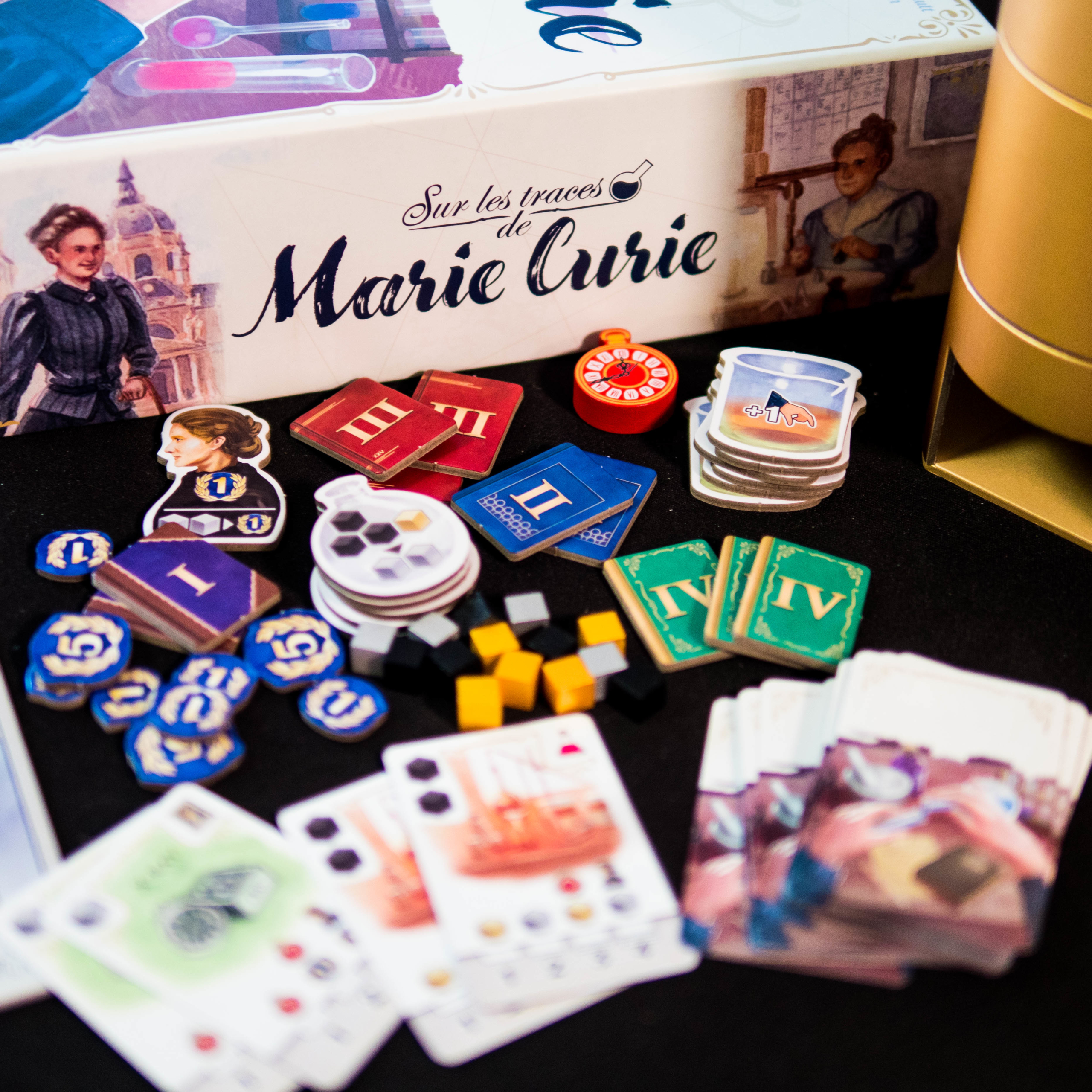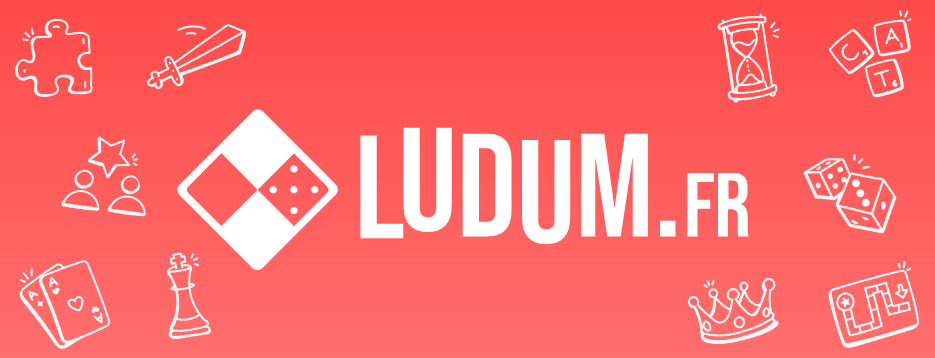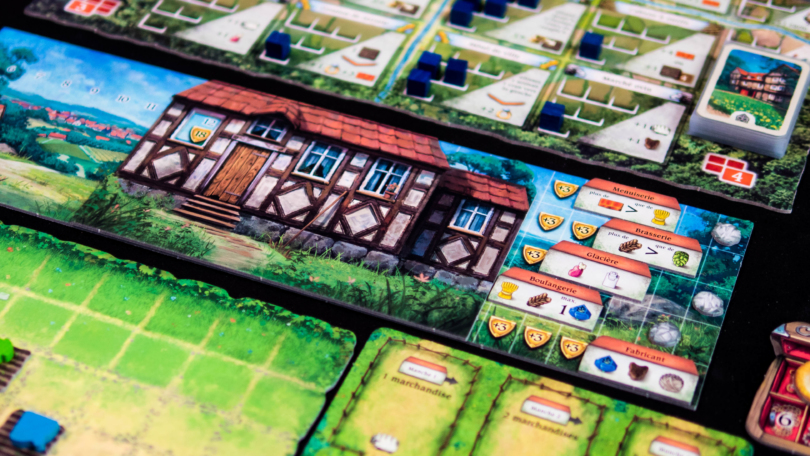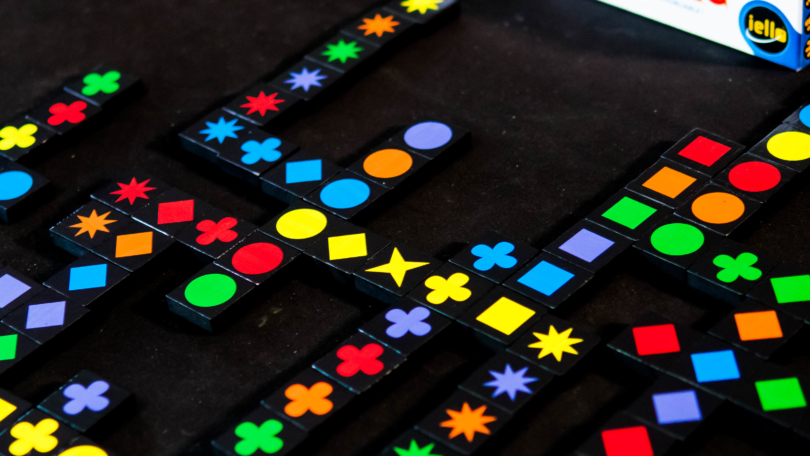Review In the footsteps of Marie Curie
7.7Good
Inspired by the life of Marie Curie, this family game offers an original resource management mechanic with a cube tower and card collection. While randomness is present, it does not spoil the pleasure of carrying out scientific experiments.
Positives
- The mechanics of the cube tower
- Impeccable material
- Fast games
- A tense game in terms of PV
Negatives
- Randomness
- Lack of interaction
- A little too mechanical
- Maybe a little lack of replayability
Breakdown
- Components and illustrations 9.0
- Mechanics 7.0
- Thematic 6.5
- Replayability 7.0
- Handling 9.5
- Interaction 7.5
- Originality 7.5


